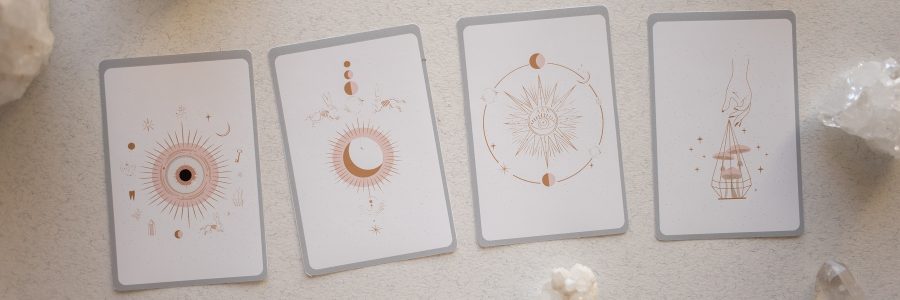A Tarot card deck consists of 78 colorful cards, each imprinted with captivating and curious images. These cards, filled with unique meanings and portents, are larger than ordinary playing cards and create an impressive display when ritually laid out. In the hands of a trained “reader,” this deck of special cards can provide glimpses into the future, both for the reader and the person seeking a reading. Let’s explore the Tarot deck further, including its structure, types, and origins.
The Structure of the Tarot Deck
The Tarot deck is divided into two main sections: the Major Arcana and the Minor Arcana. The Major Arcana comprises 22 symbolic cards, each representing a significant archetype or concept. These cards include the magician, high priestess, empress, emperor, hierophant, lovers, chariot, strength, hermit, wheel, justice, hanged man, death, temperance, devil, tower, star, moon, sun, judgment, and world.
On the other hand, the Minor Arcana consists of 56 suit cards, categorized into four suits: wands, swords, cups, and pentacles. Interestingly, the suit cards are also known as “pip” cards. The Minor Arcana includes aces, twos, threes, fours, fives, sixes, sevens, eights, nines, and tens, as well as court cards, including pages, knights, queens, and kings.
Types and Styles of Tarot Cards
Tarot cards come in various types and styles, and even a breakdown of the more common Tarot card deck reads like a mysterious journey into the occult. Each deck has its unique symbolism, artwork, and interpretations. These different variations provide diverse perspectives and allow for personal preferences when selecting a deck for readings.
The Origins of Tarot
The origins of Tarot are as diverse as the interpretations of the cards themselves. Various theories suggest connections to ancient mysteries such as Egypt, the mythical city of Atlantis, or the magical traditions of European gypsies. However, when examining the etymology of the word “Tarot,” we find that the deck likely originated in the mid-15th century within the northern Italian courts of nobility.
The term “Tarot” derives from the Italian word “Tarocchi,” which was initially known as “carte da trionfi” or “cards with trumps” in French. Over time, “Tarocchi” was shortened to “Taro” and eventually evolved into the widely used term “Tarot” in French. The name itself suggests a connection to divination, which aligns with how Tarot is regarded by believers. While the complete origins of Tarot may be lost to the passage of time, the name and its association with divination offer partial explanations.
Interpreting the Tarot
The key to successful Tarot readings lies not only in understanding the meanings of the cards but also in interpreting them. A gifted Tarot reader can cultivate a substantial following by accurately predicting the futures of friends, family, and even strangers seeking guidance.
Tarot cards remain an entertaining and intriguing journey into the unknown, the inexplicable, and the often mystifying realms of life. Their origins may be shrouded in doubt for a reason, perhaps to preserve the mystique and reveal only what the cards themselves know for sure. As we delve into the remarkable world of Tarot, we embark on a captivating exploration of the human desire to comprehend the future and uncover hidden truths.
